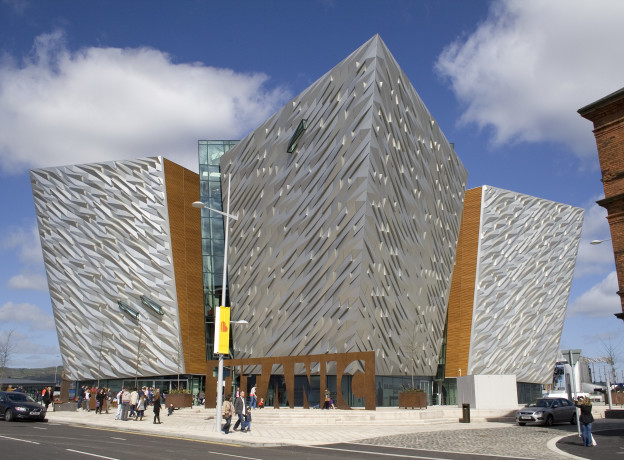Belfast
My Italian friend insisted that we do something at the end of the Dublin conference. He had concocted an idea that we should drive to Belfast. I had never been, he had never been, so we rented a car and headed off into the unknown. My first mistake was to forget my passport, drive twenty miles back to retrieve it, only to discover as we entered the environs of Belfast, that there was no border patrol and no passport officer waiting behind the bushes. It was a seamless entry, with only a cell phone notification to indicate that we had passed from the Republic of Ireland into the United Kingdom. The countryside between the two cities is actually rather splendid. Rolling hills, lots of sheep – about as far away as I had imagined from my earlier nightmare visions of the “Troubles” during the 80s.
The funny thing is that when I asked several of my Irish friends who lived in Dublin if they had ever been to Belfast, they looked at me horrified. Who would go to Belfast?! It’s too dangerous they said. We won’t be going there in a hurry. What was I letting myself in for? Well as it turned out it all seemed pretty harmless to me. There is an area of the city now on a sightseeing tour, where you can see the various points where some of the major confrontations took place between the British military and the IRA. But beyond that, most of the place looked a bit like a suburban English town on a bad day.
We had decided to head to the Titanic Museum, constructed in the shipyards where the Titanic was built. It is a modern day masterpiece with six floors that even has a Disney-like train journey as part of the tour. You really need about three hours in the museum; the cost of entry is about £15, less if you’re a student. And frankly it’s worth an afternoon excursion from Dublin. You get to see the fascinating history of Belfast, the city that was built on flax and linen and eventually became one of the world’s major shipyards. This was almost the beginning of the luxury cruise liners we see floating the ocean today.
Disasters are always fascinating and eerie. The museum pitches the final moments and creates this austere atmosphere with only the last words of the telegraph operator and a recreation of the ship going down to provide the backdrop to the tragedy. The heroic stories pull you in and I wish I could’ve stayed there longer. Outside the museum there is a piece of graffiti on the wall that someone scrawled; it made me smile. It said simply, “it was alright when it left here.”

